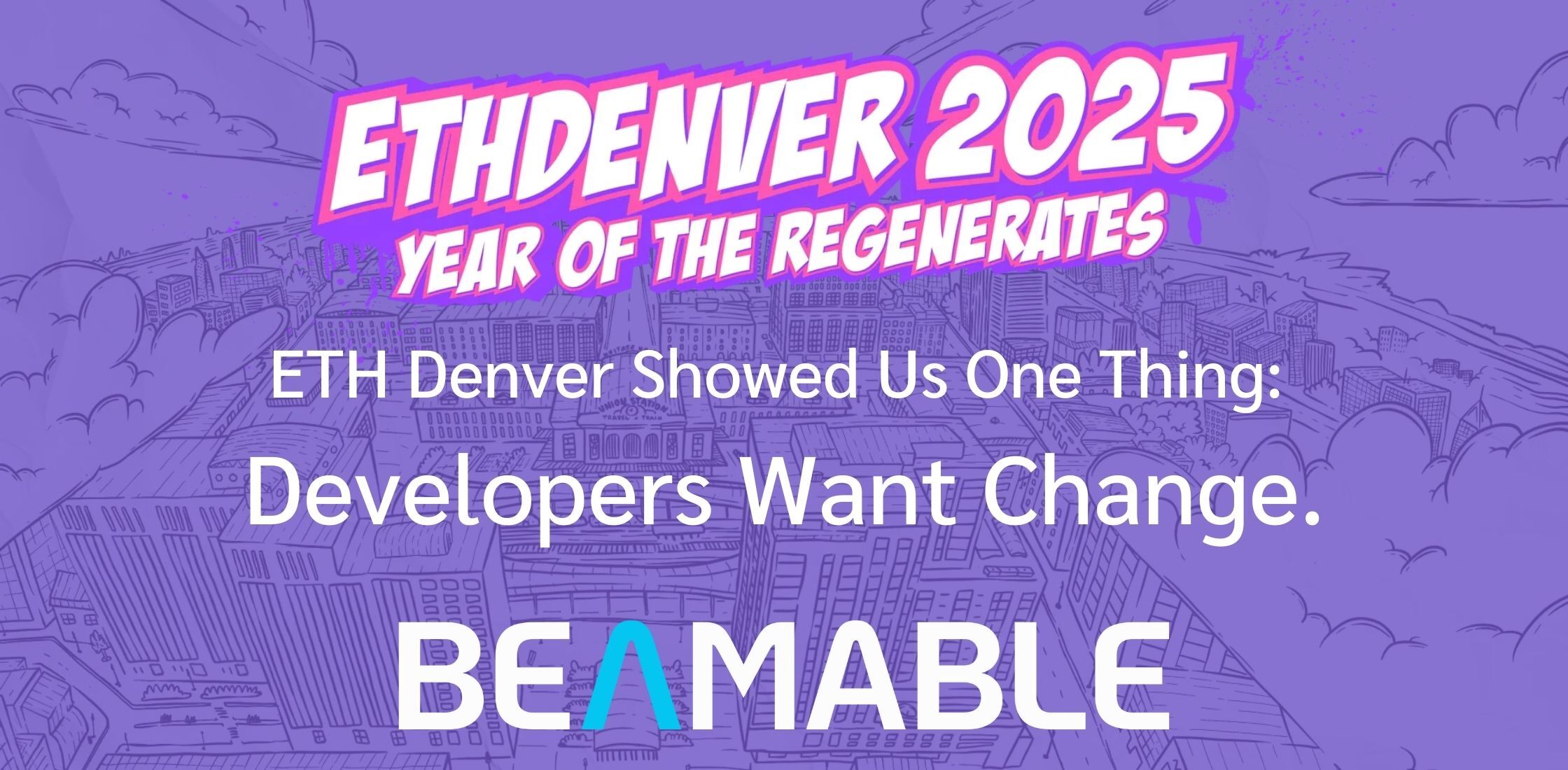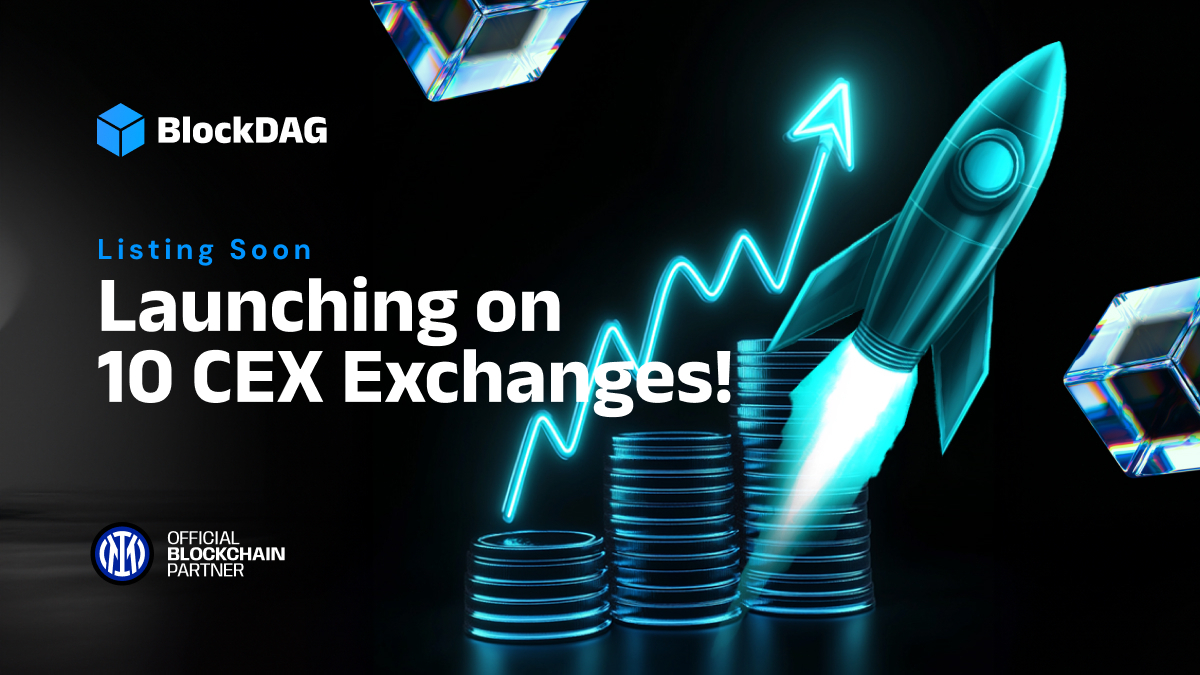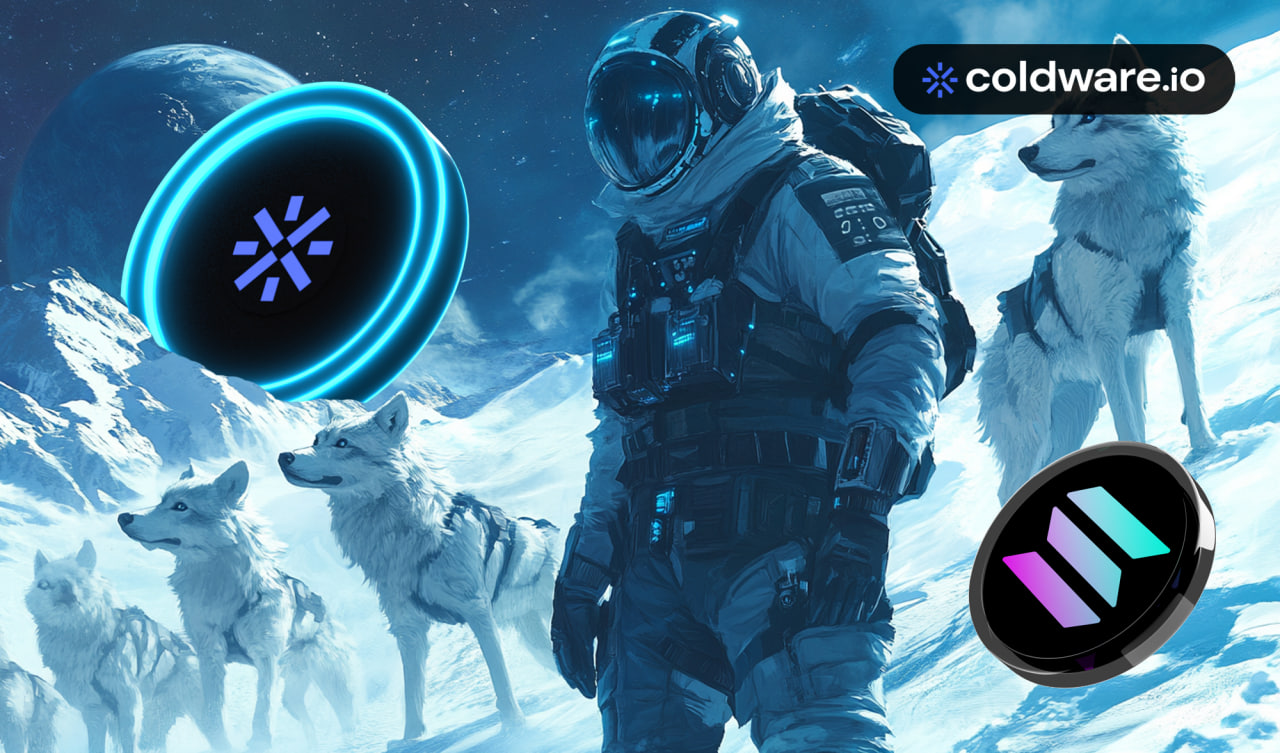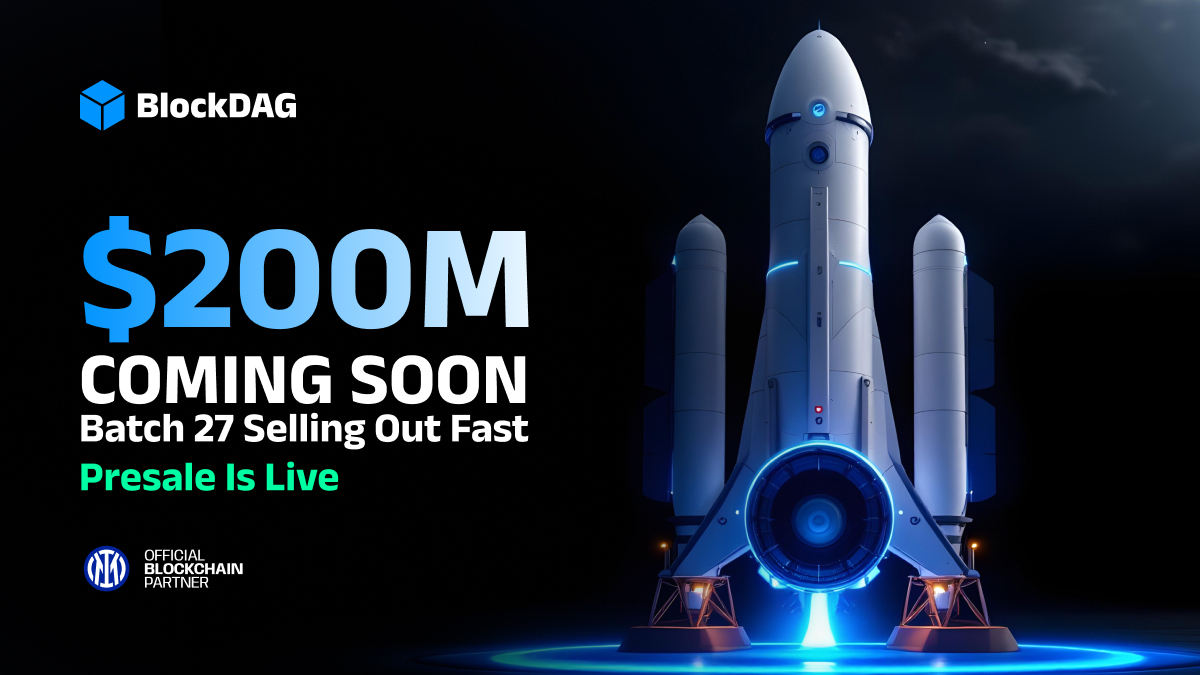Latest DePIN News

3 months ago
Beamable.Network: Pioneering Decentralized Infrastructure for Game Development
The landscape of live service games is rapidly evolving, with developers increasingly seeking decentralized infrastructure to address the challenges posed by traditional centralized systems. At ETH Denver 2025, the demand for solutions like Beamable.Network was evident, as developers expressed their desire for open-source, community-owned networks that provide greater control and reduce the risks associated with shifting corporate strategies. Beamable.Network has emerged as a leading decentralized physical infrastructure (DePIN) project, recognized for its ability to facilitate faster, more cost-effective game development while mitigating the existential threats posed by centralized providers.
Centralized infrastructure has long been a source of frustration for game developers, who face the risk of service shutdowns and unexpected pricing changes from providers like Amazon and Unity. The fragility of relying on a single provider for critical game infrastructure can lead to costly migrations and operational disruptions. Beamable.Network addresses these issues by offering a decentralized alternative that empowers studios to control their tech stack, reduce dependency on any one provider, and benefit from a competitive pricing model. With over 80 games already utilizing the platform, the shift towards decentralized infrastructure is not just a theoretical concept but a practical solution that is gaining traction in the gaming industry.
The implications of Beamable.Network extend beyond gaming, as the DePIN concept is being embraced across various sectors, including cloud computing and AI workloads. By decentralizing physical infrastructure, Beamable.Network fosters a competitive environment where data centers vie for capacity, allowing studios to stake tokens for reliable compute access. This innovative approach not only lowers costs significantly but also accelerates development by providing a flexible and interoperable backend. As the gaming industry continues to lead the charge towards decentralized solutions, Beamable.Network exemplifies how open infrastructure can revolutionize the way developers build and sustain their games, ensuring they are well-equipped for the future.

3 months ago
Venture Capital Firms Boost Blockchain Investments Amid Crypto Volatility
The first quarter of 2025 has proven to be a tumultuous period for the cryptocurrency market, characterized by extreme fluctuations in investor sentiment. Bitcoin (BTC) experienced a remarkable rally to all-time highs, followed by a significant correction, all while receiving notable support from political figures such as Donald Trump. Amidst this volatility, venture capital firms have been actively expanding their investments in blockchain and crypto startups, particularly in areas such as decentralized physical infrastructure networks (DePINs), Web3 gaming, real-world asset (RWA) tokenization, and derivatives exchange markets. The latest VC Roundup highlights seven significant funding announcements across the industry.
Among the notable developments, Alchemy has launched a $5 million "Everyone Onchain Fund" aimed at promoting Web3 adoption on Ethereum. This initiative will provide developers with gas and computing credits to facilitate their projects. Alchemy's partnership with World, a biometric digital identity project, has already garnered over 23 million users. Additionally, Mavryk Dynamics secured $5 million in funding to develop a layer-1 RWA network, bridging traditional finance with decentralized finance (DeFi) through innovative non-custodial features. The RWA market has seen substantial growth, reaching $17.9 billion as of early March.
Other significant funding rounds include Rho Labs, which raised $4 million for its decentralized rates exchange, and Teneo Protocol, which closed a $3 million round to democratize social media data. Furthermore, Fluent Labs raised $8 million to enhance its Ethereum layer-2 network, while The Game Company secured $10 million to develop a cloud gaming infrastructure. Lastly, ACID Labs, a Web3 gaming studio, received $8 million to scale its social gaming platform on Telegram. These investments reflect a growing confidence in the potential of blockchain technology across various sectors, particularly in gaming and decentralized finance.

3 months ago
BlockDAG's Exchange Launch Sparks Buying Surge in Cryptocurrency Market
The cryptocurrency market is witnessing significant activity as BlockDAG (BDAG) prepares for ten major exchange listings, which are expected to enhance liquidity and accessibility for investors. The presale of BDAG has been remarkably successful, raising over $200 million and showing a staggering 2380% increase in value. Currently priced at $0.0248, analysts predict that BDAG could reach $20 by 2027, presenting an enticing opportunity for early participants who could see returns of up to 800 times their initial investment. The anticipation surrounding these listings is high, as they are likely to propel BDAG towards wider adoption and increased market visibility.
In addition to BlockDAG's promising outlook, Bittensor (TAO) has also made headlines with a 33% price increase this week, driven by robust buying activity. The asset has shown a 15.61% rise in just 24 hours and an 18.31% increase over the past week. Technical indicators suggest that the buying momentum may continue, potentially pushing Bittensor's price towards resistance levels of $500 and beyond. However, market fluctuations could lead to support levels around $437.5 or $326, making it crucial for investors to stay informed about market conditions.
Filecoin (FIL) is another asset gaining traction, with a 2.57% increase over the past week. Analysts note that FIL is forming a bullish reversal pattern, which could lead to significant price increases if the upward trend continues. Predictions suggest that Filecoin could reach between $45 and $250, depending on market dynamics. As the cryptocurrency landscape evolves, both Bittensor and Filecoin are assets to watch, alongside BlockDAG, which is positioned as a leading investment opportunity for 2025.

3 months ago
Innovative Tokenomics: Integrating Price-Linked Unlocks with Deflationary Models
In a groundbreaking initiative, the integration of CZ's price-linked unlock mechanism with PowerPod's deflationary model aims to create a robust ecosystem that emphasizes token release constraints, revenue reinvestment, and community governance. The plan outlines a structured approach to unlocking tokens, specifically targeting locked tokens for the team, advisors, and early investors, which constitutes 20% of the total supply. Initial unlocks will release 10% of the tokens at project launch, followed by subsequent unlocks of 5% every three months, contingent on specific price and time conditions. If these conditions are not met, the unlock window will be postponed, and a portion of the tokens will be burned to maintain scarcity and value stability.
The dynamic balance mechanism for $PT production and burn is designed to incentivize user engagement through various behaviors, such as energy consumption and transaction activities. Users can earn $PT based on their electricity usage and transaction volumes, while also benefiting from algorithmic distributions for community contributions. The burning mechanisms are strategically implemented to enhance the value of $PT, with conditions that increase the burn rate based on the price performance of $PPD. This ensures that the ecosystem remains responsive to market dynamics and user activities, fostering a sustainable growth environment.
Lastly, the Treasury burn mechanism is upgraded to link revenue directly to token value, with a significant portion of mining hardware sales and service fees allocated for burning. The model incorporates a halving cycle that adjusts supply based on market conditions, alongside robust risk control measures to prevent price manipulation and ensure community governance. By establishing a behavior-incentive-deflation flywheel, this innovative design not only enhances the utility of $PT but also positions $PPD as a long-term value storage asset, ultimately fostering a thriving and resilient ecosystem that aligns the interests of all stakeholders involved.

3 months ago
Coldware Emerges as a Contender in the Blockchain Space
The blockchain landscape is witnessing a significant evolution, with Ethereum (ETH) and Solana (SOL) vying for supremacy in the realms of smart contracts, decentralized finance (DeFi), and non-fungible tokens (NFTs). However, a new player, Coldware (COLD), is emerging as a potential disruptor in the decentralized physical infrastructure network (DePIN) and PayFi sectors. While Ethereum emphasizes security and decentralization, and Solana prioritizes speed and low transaction costs, Coldware is carving out a niche as a blockchain infrastructure tailored for real-world applications, focusing on reliability and enterprise adoption.
Coldware (COLD) is positioning itself as a more efficient and decentralized alternative to its competitors. Unlike Solana, which has faced network reliability issues, Coldware is designed to support tokenized real-world assets and decentralized infrastructure. This focus on DePIN and PayFi solutions is expected to drive significant adoption in the coming years, attracting investments from those who previously supported Ethereum and Solana. Developers are increasingly drawn to Coldware for its promise of speed, efficiency, and security, without the technical complexities associated with older blockchain networks.
As Ethereum continues to grapple with high gas fees and scalability challenges, it remains the most trusted blockchain for decentralized applications and institutional adoption. Meanwhile, Solana's focus on speed has made it a key player in DeFi and gaming, despite concerns over its long-term reliability. As the competition intensifies among these three networks, Coldware's fresh approach and lack of legacy technical debt position it as a strong contender for enterprises and developers aiming to build scalable and secure decentralized applications. The race for blockchain supremacy is evolving, and Coldware is ready to challenge the established giants.

3 months ago
The Data Act: A Catalyst for a New Data Economy
The upcoming Data Act, set to come into effect on September 12, 2025, represents a significant shift in how data is accessed, used, and shared across the EU. This legislation aims to dismantle existing data silos, empowering consumers and businesses alike by granting them ownership and control over their data. The European Commission anticipates that the Data Act will foster a new data economy, projected to be worth €270 billion by 2028. For consumers, this means they will finally have access to the data generated by their devices, while IoT manufacturers will face new responsibilities to inform users about data generation and access rights at the point of sale.
Enforcement of the Data Act is a crucial aspect that has raised questions among consumers and developers. Each EU member state is tasked with integrating the Data Act into their national legislation by the deadline, including establishing penalties for non-compliance. For instance, Finland's draft proposal suggests penalties aligned with GDPR, allowing fines of up to €100,000 and up to 4% of a company's global turnover. Other countries, like the Netherlands, are also considering significant fines for violations, ensuring that the Data Act is not merely a theoretical framework but a practical regulation with real consequences for non-compliance.
The Data Act also aims to create a level playing field by designating major tech companies as 'gatekeepers' who are restricted from accessing third-party data under the Act. This regulation is designed to prevent these dominant players from monopolizing the new data landscape, thus allowing smaller enterprises and Web3 projects to compete effectively. Emerging technologies, particularly AI and AI agents, stand to benefit immensely from the Data Act, as it unlocks access to machine-readable data from connected devices. Streamr, with its technology connecting real-time data providers and subscribers, is positioned to facilitate this new data economy, bridging the gap between AI systems and real-time data sources, and paving the way for innovative applications across various industries.

3 months ago
Revolutionizing Agriculture: The Role of Vertical Farming and Web3
In a world grappling with soil degradation and food scarcity, vertical farming emerges as a vital solution. This innovative agricultural method allows for the cultivation of crops in stacked layers, making it possible to grow food in urban areas and arid regions where traditional farming is challenging. The potential of vertical farming extends beyond just increasing food production; it also addresses the looming threat of world hunger, which is exacerbated by the erosion of fertile land. As the availability of arable land diminishes, the need for efficient farming solutions becomes increasingly urgent, highlighting the critical intersection of food security and social stability.
However, despite its promise, vertical farming faces significant financial hurdles. Venture capitalists often shy away from investing in these projects due to their high upfront costs and the long-term nature of returns. This is where Web3 technology can play a transformative role. By implementing decentralized physical infrastructure networks (DePINs) and tokenization, vertical farms can attract funding from a broader base of investors. This approach allows for the distribution of farm revenues to token holders, providing the necessary liquidity to invest in advanced technologies and operational costs, thus enabling these farms to thrive without relying solely on traditional venture capital.
The integration of blockchain technology further enhances the viability of vertical farming by ensuring transparency and traceability in the supply chain. Smart contracts can manage revenue distribution and operational data, giving investors a clear view of farm performance. As the movement towards decentralized agriculture gains momentum, the vision of urban rooftop gardens and local food production becomes more attainable. By harnessing the power of Web3, we can revolutionize our food systems, making them more sustainable and resilient for future generations. The future of food is indeed vertical, decentralized, and promising, paving the way for a healthier planet and society.

3 months ago
Crypto Market Insights: Filecoin, Mantle, and BlockDAG's Rapid Growth
Crypto traders are keenly monitoring the latest developments in the fastest-growing crypto projects, particularly focusing on Filecoin, Mantle, and BlockDAG. Filecoin is currently testing a critical support level at $3.38, which is pivotal for its short-term trend. A rise in trading volume by 16% indicates increased interest among traders, and the formation of an ascending triangle suggests a potential price surge if it maintains above this support. However, a drop below $3.30 could lead to a decline towards $2.92, as the 200-day EMA reflects bearish sentiment despite the possibility of a rebound if support holds.
In contrast, Mantle has shown a robust recovery, with a 4% increase in value over the past day, bringing its market cap to $3.557 billion. The positive convergence in the Simple Moving Average and a sharp rise in the Relative Strength Index (RSI) indicate sustained bullish momentum. If favorable market conditions persist, Mantle could break through the resistance at $1.0750, potentially reaching $1.2730. Conversely, a bearish shift could see it retesting support at $0.9150 or dropping to $0.7625, highlighting the volatility in its price trajectory.
BlockDAG's presale has emerged as one of the most successful in recent crypto history, surpassing $199 million and nearing its $600 million target. Key drivers of this growth include the X1 Miner App, which has attracted over 500,000 active users, and a partnership with Inter Milan, enhancing its global visibility. Analysts predict that BDAG could reach $1 by the end of the year, offering an astonishing ROI of 3,932%. With the mainnet launch scheduled for 2025, the demand for BDAG is surging, making this an opportune moment for traders to engage with this rapidly expanding project.

3 months ago
MVL to Launch Mainnet on Base Layer 3 Network and Expand Ecosystem into the U.S.
MVL, a pioneering blockchain mobility company, has announced a significant collaboration with Base chain to launch its mainnet on Base's recent layer 3 network. This development marks a crucial evolution in MVL's ecosystem, positioning it as a leader in blockchain-powered mobility solutions. MVL has been dedicated to creating a mobility ecosystem based on fairness and transparency, but scaling challenges have hindered its growth. Over the past six years, MVL has focused on building real-world infrastructure and ensuring utility before this mainnet launch. Its ecosystem now includes innovative services such as TADA, ONiON Mobility, DePIN, and Musubi, all designed to enhance user experience and operational efficiency.
The launch of MVL's mainnet on Base's Layer 3 network is a strategic decision that promises to enhance the scalability and efficiency of its services. Base's network offers the security, low fees, and scalability necessary for MVL's expanding ecosystem. By compressing transactions into batches and recording them on the Ethereum mainnet, MVL can efficiently handle large volumes of data and transactions. This integration will also enhance the utility of MVL's native token, driving adoption and expanding its role within the ecosystem. The collaboration with Basechain is expected to unify MVL's services, which were previously separate, into a cohesive and scalable platform.
In addition to the mainnet launch, MVL has signed a Memorandum of Understanding with CO-OP, a community-owned ride-sharing platform, to expand its ecosystem into the United States, starting with Colorado. This partnership aligns with MVL's mission to promote fair fare distribution among drivers, mirroring TADA's zero-commission model. By developing an application system for mobility service providers, MVL aims to foster a more decentralized mobility network, offering fairer fares and improved services compared to traditional platforms. This strategic move not only enhances MVL's offerings but also sets a new standard for driver-focused mobility solutions in the U.S.

3 months ago
Team Rizzo Secures $25 Million Insurance Coverage Against Hacking Risks
Team Rizzo, which operates subnets and validator services on Bittensor, has successfully secured $25 million in blockchain-based insurance coverage to mitigate hacking risks. According to Coindesk, this coverage was arranged by Native, a digital asset insurance broker specializing in protecting blockchain-related businesses. The insurance is specifically designed to safeguard Rizzo’s validator services and machine learning operations on Bittensor, an AI-driven cryptocurrency network. This move comes in response to the increasing threat of smart contract hacks, which can result in significant token losses, particularly affecting the network's proof-of-stake consensus mechanism. The urgency for such coverage is underscored by recent incidents, including a $1.5 billion loss suffered by Bybit, a major cryptocurrency exchange, due to hackers associated with North Korea.
Founded in 2019, Nexus Mutual has been a pioneer in providing blockchain-based insurance, encouraging its community to pool assets into syndicates that cover various crypto-related risks. Native, which manages one of the largest capital pools on Nexus Mutual, also connects clients to traditional insurance markets like Lloyd’s of London for specific crypto insurance needs. The rapid arrangement of the $25 million coverage for Team Rizzo has drawn attention, as it was completed in just four weeks. Native co-founder Dan Ross highlighted the significance of this achievement, noting that it is the first instance of Bittensor being underwritten. Team Rizzo's initiative to secure their own policy aims to instill confidence in potential validators, encouraging them to stake their assets with assurance.
This development reflects a growing trend in the cryptocurrency sector, where the demand for insurance solutions is increasing amidst the rising incidence of hacks and exploits. With limited insurance options available, especially in decentralized finance (DeFi) and staking, the swift response from Native demonstrates the potential for innovation in the insurance landscape. The introduction of tailored insurance products for blockchain projects not only enhances security but also fosters trust among users, ultimately contributing to the stability and growth of the cryptocurrency ecosystem.
Signup for latest DePIN news and updates